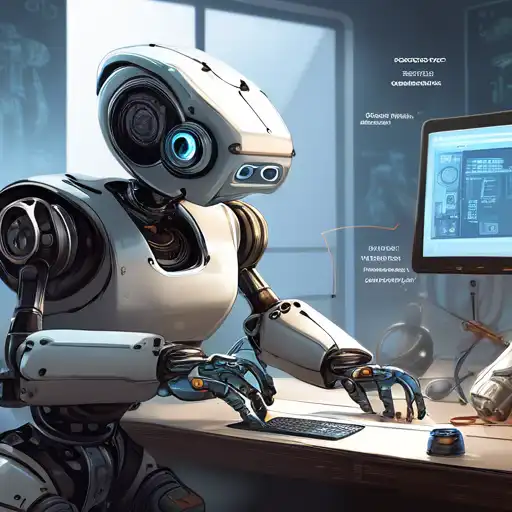Introduction to Robotics Programming
Robotics programming is an exciting field that combines creativity with technical skills, allowing you to bring robots to life. Whether you're a hobbyist or aspiring to a career in robotics, understanding the basics is your first step towards mastering this innovative domain.
Why Learn Robotics Programming?
Robotics programming opens up a world of possibilities, from automating mundane tasks to contributing to advancements in medical, industrial, and entertainment sectors. It's a skill that not only enhances your problem-solving abilities but also prepares you for the future of technology.
Getting Started with Robotics Programming
Before diving into robotics programming, it's essential to grasp the foundational concepts. Here's a step-by-step guide to help you begin your journey:
- Understand the Basics of Robotics: Learn about the different types of robots and their applications. This knowledge will help you identify your area of interest.
- Learn a Programming Language: Python and C++ are widely used in robotics programming. Start with Python if you're a beginner due to its simplicity.
- Get Familiar with Robotics Kits: Robotics kits like LEGO Mindstorms or Arduino are great for beginners. They provide hands-on experience with building and programming robots.
- Explore Robotics Frameworks: Frameworks such as ROS (Robot Operating System) offer tools and libraries to simplify robotics programming.
- Join a Community: Engaging with communities like Robotics Stack Exchange can provide valuable insights and support.
Essential Tools for Robotics Programming
To effectively program robots, you'll need the right tools. Here are some essentials:
- Integrated Development Environment (IDE): Software like Arduino IDE or PyCharm can streamline your coding process.
- Simulation Software: Tools like Gazebo allow you to test your robots in a virtual environment before physical implementation.
- Microcontrollers: Devices such as Raspberry Pi and Arduino serve as the brain of your robot, executing the programmed commands.
Challenges in Robotics Programming
While robotics programming is rewarding, it comes with its set of challenges. These include dealing with hardware limitations, understanding complex algorithms, and ensuring real-time performance. Overcoming these challenges requires patience, practice, and continuous learning.
Future of Robotics Programming
The future of robotics programming is bright, with advancements in AI and machine learning paving the way for more intelligent and autonomous robots. Staying updated with the latest trends and technologies will be key to thriving in this field.
Embarking on your robotics programming journey may seem daunting at first, but with the right resources and dedication, you can achieve remarkable feats. Remember, every expert was once a beginner. Start small, keep learning, and don't be afraid to experiment.
